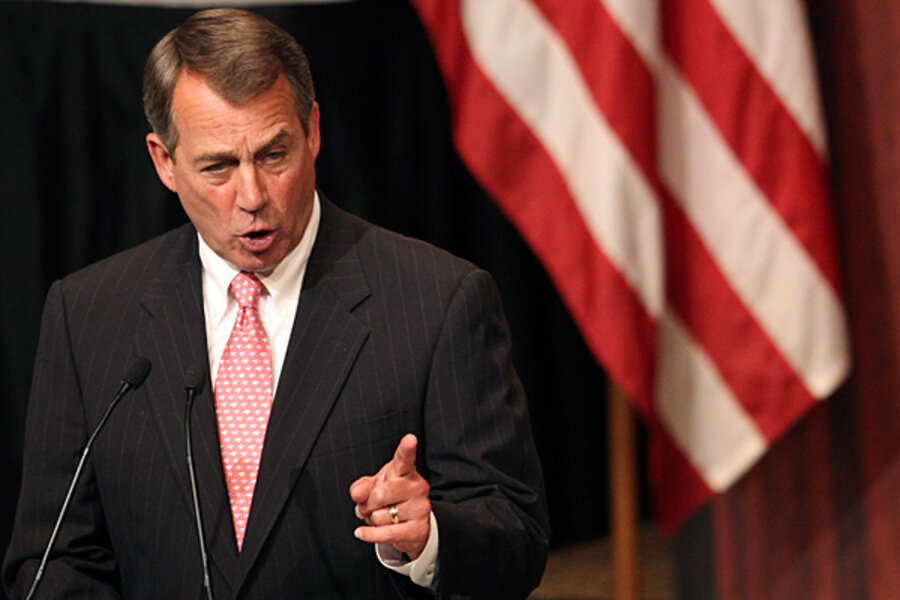John Boehner's tough talk on debt limit: a departure from history
Loading...
House Speaker John Boehner is talking tough about the debt limit. The Ohio Republican says he wants trillions of dollars of cuts in US spending in exchange for GOP support of legislation that would allow the federal government to keep borrowing beyond its current $14.3 trillion debt cap.
Yes, yes – but where did the US debt limit come from? It’s kind of a weird thing, if you think about it. From the federal government’s point of view, it’s as if it’s living in the home of a cranky uncle named “Congress” who limits the amount of money the Treasury can borrow on credit cards, while simultaneously ordering it to buy lots of new stuff, like bridges, fighter jets and Medicare prescription drug programs.
This irascible legislative paterfamilias rarely approves increases in household income (tax hikes) or reductions in other expenses (budget cuts) that might allow the family accounts to make more sense.
Well, like many things in life, the debt limit began as an effort to produce an effect different from the one it ended up creating. It started as a way to give Treasury officials more financial flexibility – not less.
A statutory limit on US indebtedness began in 1917, to help finance the US entry into World War I, according to a new Congressional Research Service (CRS) report on this subject. Before then, Congress had simply voted to approve specific acts of borrowing, such as the Panama Canal loan, or specific types of debt instruments.
Subsequent legislative acts gave the Treasury more and more leeway to raise cash as it saw fit, via 30-year bonds or whatever mix of terms and interest rates seemed to best fit the government’s needs.
But government just got more and more expensive. After World War II, the feds began bumping up against the debt ceiling. The problem turned acute by the early 1960s. Since March 1962, Congress has altered the debt ceiling limit 69 times.
At times such as now, when the US is very near its debt limit, the Treasury sometimes has to resort to some financial shuffling to make ends meet. This can cause “great inconvenience” and “add uncertainty” to Treasury operations, CRS notes.
So why have a debt limit at all? For one thing, it gives Congress an added dollop of leverage over the nation’s direction. “The debt limit also imposes a form of fiscal accountability,” notes CRS, forcing Congress and the president to take visible action when the federal government spends more money than it collects.





